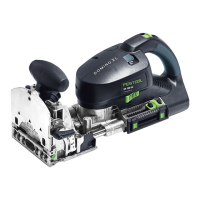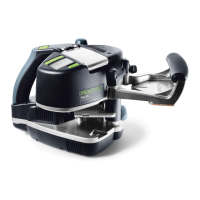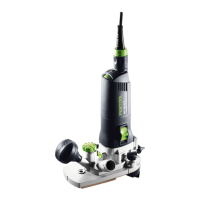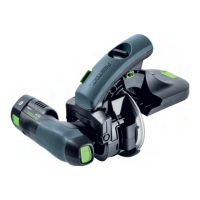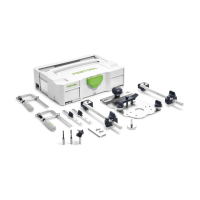16 Domino XL DF700
Making Frame Joints
Butt Joint Frames
When making butt joint frames, such as cabinet faceframes,
use pencil lines to lay out the position of the tenons. Use the
sight gauge on the joiner’s fence to position the joiner over
the pencil line.
For narrow frame stock, the optional Trim Stop can be used
to securely hold the workpiece (shown below).
Trim Stop
Bench Dog
Mitered Frames
When making mitered frames, position the tenon closer to
the inside corner. This reduces the likelihood of cutting the
mortise all the way through the workpiece.
For larger frame stock, you may be able to use the stop pins
for setting the mortise position.
Make sure to securely clamp the workpiece to the bench
when mortising a mitered joint.
Cope and Stick (Stile and Rail) Frames
Domino tenons can also be used to strengthen cope and
stick frame construction too (bottom right picture). This is
typically found in raised panel door frames.
It is important to note that the two frame pieces overlap, so
the depth of the mortise needs to be extended. The amount
that each mortise needs to be extended is one-half the
amount of overlap.
Example: A typical stile and rail router bit set has a prole
width (overlap) of 3/8-inch (about 10mm). For a 40mm long
tenon, instead of plunging 20mm deep, you should increase
this to 25mm for both workpieces.
Stick Profile
Cope Profile
Overlap
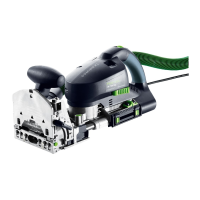
